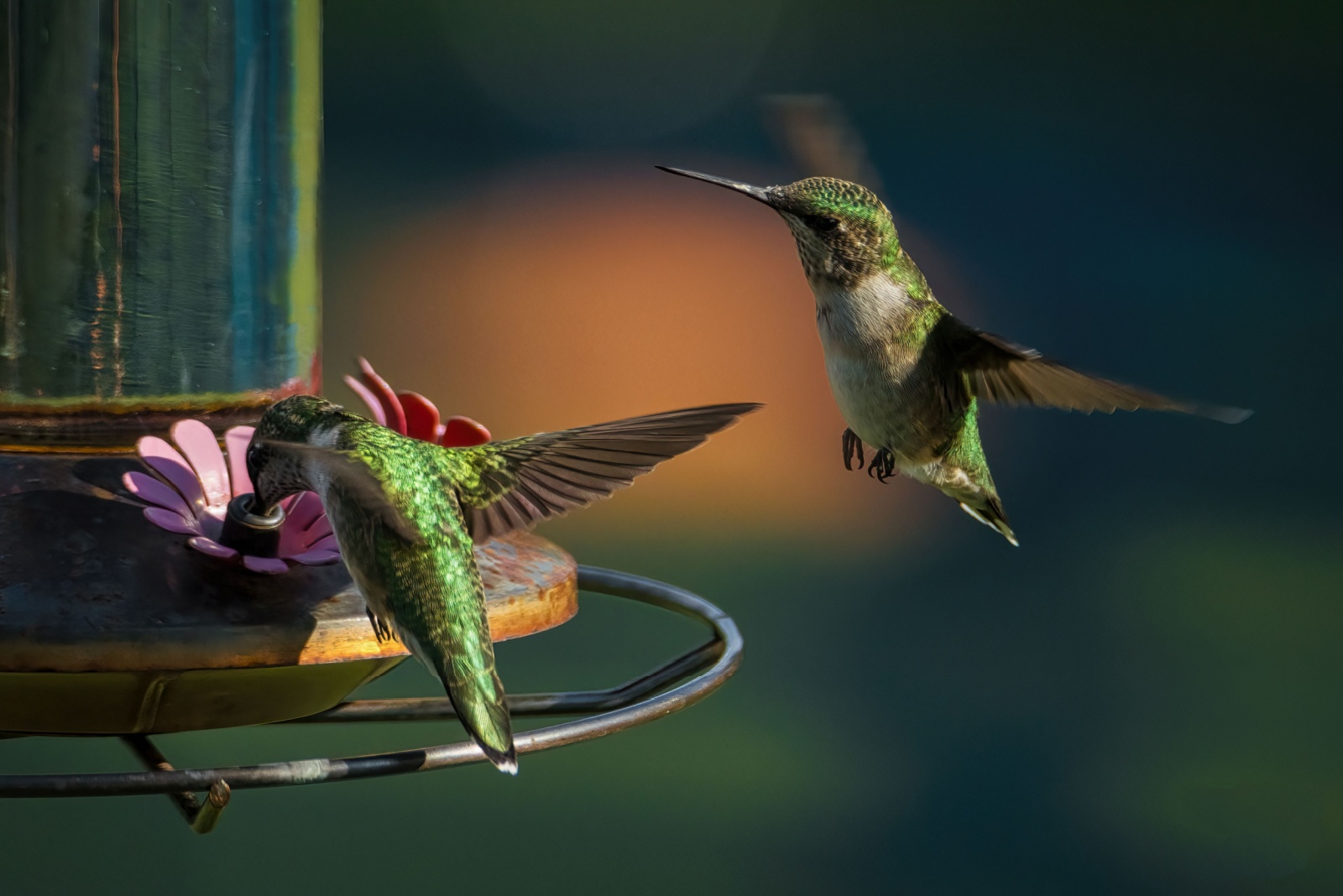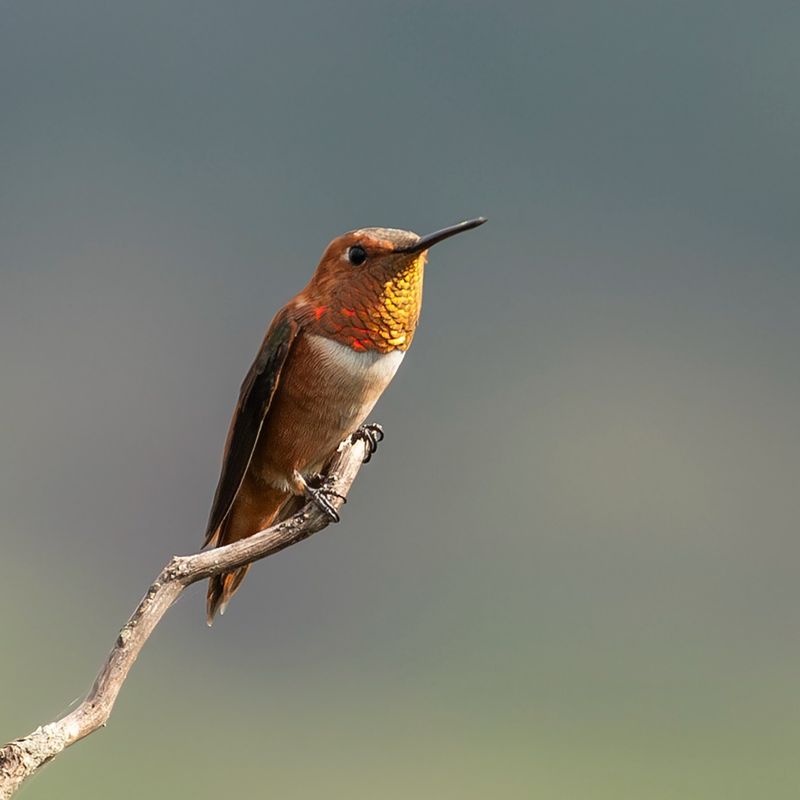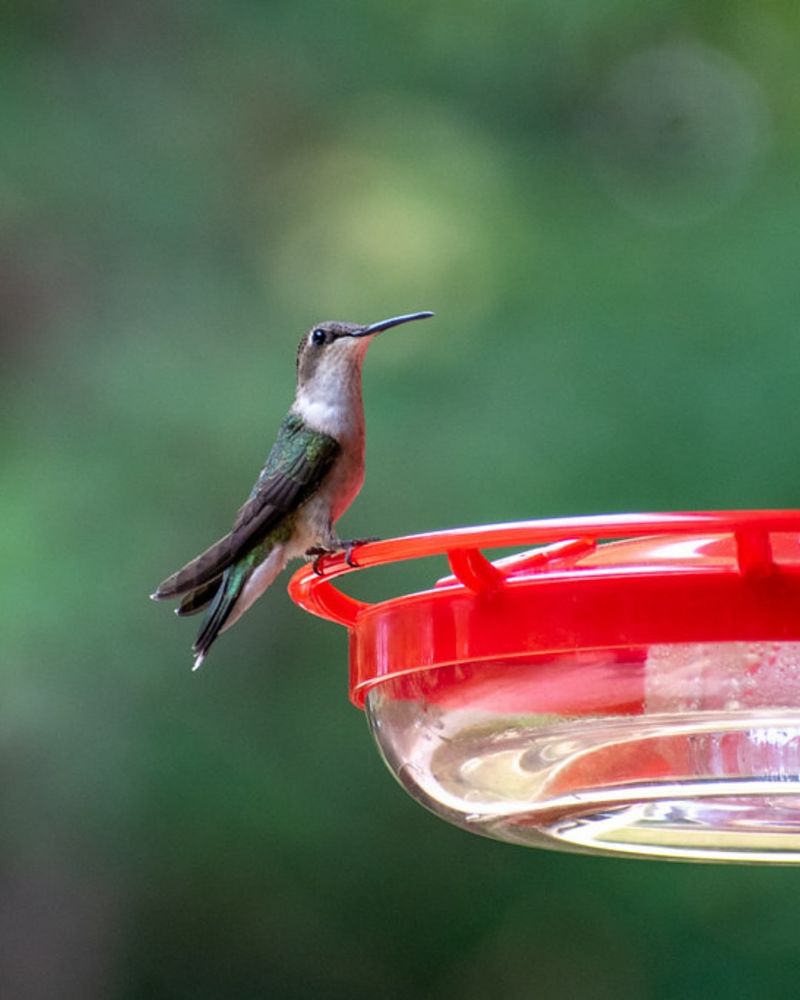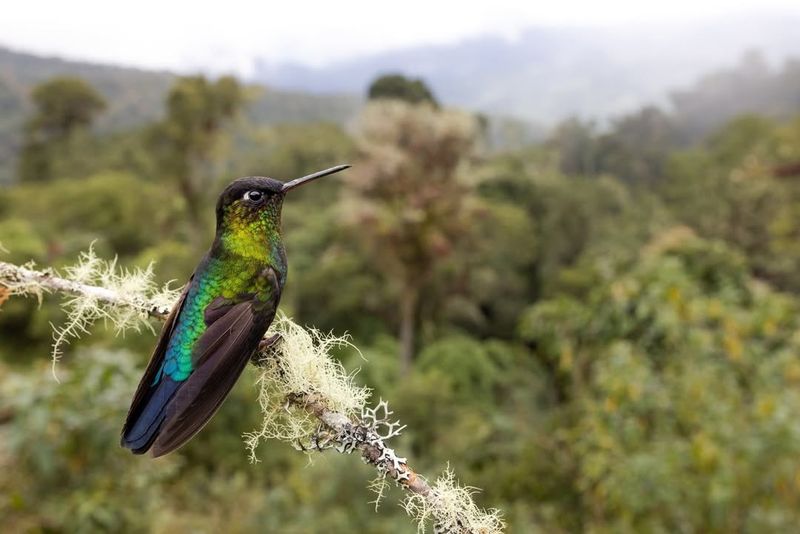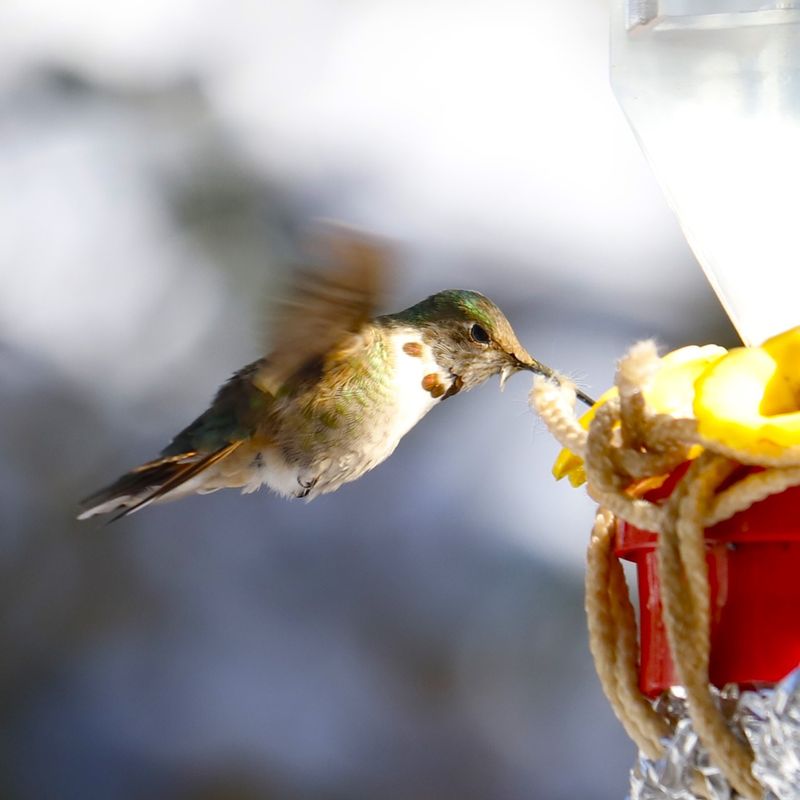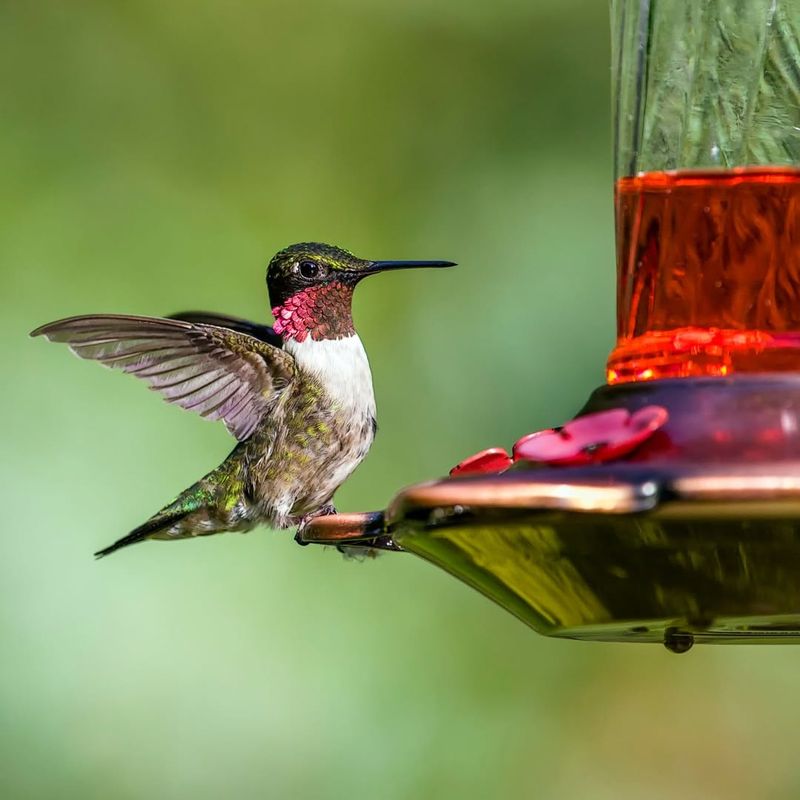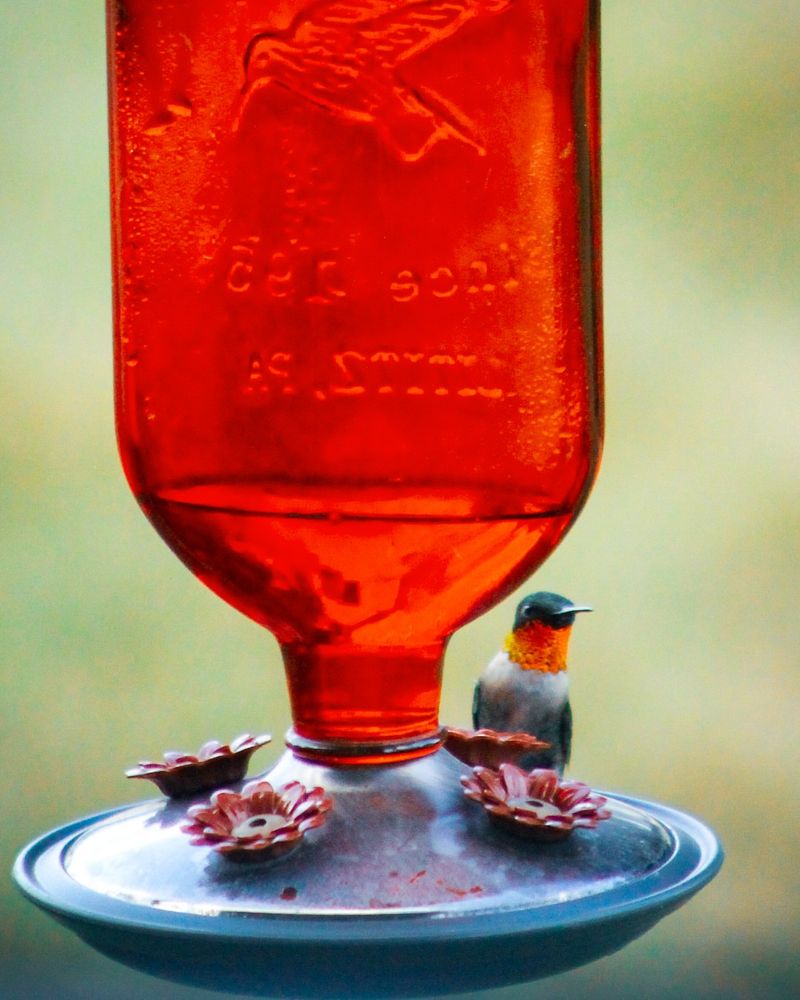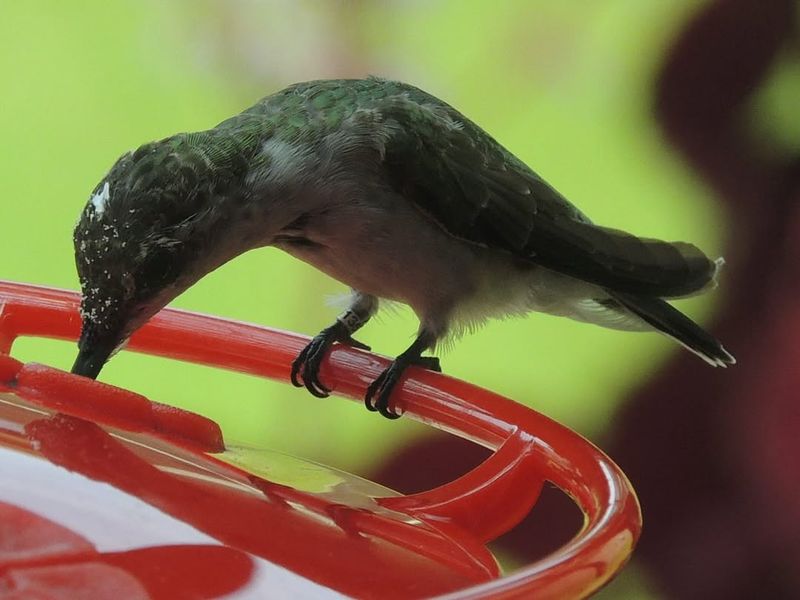Idaho skies fill with tiny acrobats that dart like sparks, yet every season must run its course. As hummingbirds wrap up their visit, timing counts for folks who aim to lend a hand without throwing a wrench into migration.
Take feeders down too soon and you pull the rug out from under late travelers; wait too long and you risk mixed signals. This guide cuts through guesswork and points to the sweet spot that keeps these jeweled flyers on the right path.
1. Watch For Migration Patterns In Your Area
Most hummingbirds in Idaho begin their southern migration between late August and early October. Rufous hummingbirds, the most common species, typically leave first, while a few stragglers might linger into November.
Paying attention to feeder activity helps you notice when visits decrease. Keep a simple journal noting daily sightings to track patterns year after year.
Local birding groups and online forums can provide valuable migration updates specific to your region. This information helps you make informed decisions about feeder timing.
2. Don’t Rush To Remove Feeders In September
A common misconception suggests that feeders should come down by Labor Day to encourage migration. However, hummingbirds migrate based on instinct and daylight changes, not feeder availability.
Keeping feeders up actually helps late migrants and juveniles fuel up for their long journey. Young birds especially need extra energy reserves for their first migration south.
Removing feeders too early might leave struggling birds without crucial food sources. Wait until you haven’t seen visitors for at least two weeks before taking feeders down completely.
3. Monitor Weather Conditions Carefully
Idaho’s unpredictable autumn weather plays a significant role in hummingbird departure timing. Early cold snaps might push birds south faster, while warm Indian summers can extend their stay.
Freezing temperatures pose challenges because nectar can freeze overnight. If temperatures drop below 32 degrees Fahrenheit, bring feeders inside at night and return them at dawn.
Heavy snowfall is nature’s clear signal that migration has concluded. Once winter weather arrives consistently, you can safely store your feeders until spring returns to the mountains.
4. Consider Elevation And Geographic Location
Idaho’s diverse topography means hummingbird timing varies significantly across the state. Higher elevation areas like Sun Valley see earlier departures, sometimes by mid-September, compared to lower valleys.
Northern Idaho regions near Coeur d’Alene experience different migration schedules than southern areas around Boise. Elevation differences of just a few thousand feet can shift timing by several weeks.
Research your specific location’s elevation and climate zone. Connect with local nature centers or Audubon chapters for neighborhood-specific guidance on optimal feeder removal dates.
5. Leave One Feeder Up Longer Than Others
Maintaining at least one feeder into late October provides insurance for late-migrating stragglers. Some individual birds naturally migrate later than the main population, and they need support too.
Choose your most visible feeder in a sheltered location that’s easy to monitor and maintain. This strategy balances preparation for winter while still helping any remaining hummingbirds.
Once November arrives without any sightings for two full weeks, you can confidently remove the last feeder. Store it properly after thorough cleaning to ensure it’s ready for next spring’s arrivals.
6. Track First And Last Sightings Each Year
Creating a personal hummingbird calendar builds valuable knowledge about your yard’s specific patterns. Record the first spring arrival date and the last fall departure date annually to identify trends.
Climate variations cause natural fluctuations, but multi-year data reveals helpful averages. You might discover your area consistently sees final visitors around October 15th, for example.
Share your observations with citizen science projects like eBird or Journey North. Contributing data helps researchers understand migration patterns while improving your own timing decisions for future seasons.
7. Prepare Feeders For Winter Storage Properly
When removal time finally arrives, thorough cleaning prevents mold and bacteria growth during storage. Disassemble all parts and scrub with a solution of one part white vinegar to four parts water.
Rinse components completely and allow them to air dry in sunlight, which provides natural disinfection. Inspect for cracks, leaks, or worn parts that need replacement before next season.
Store clean, dry feeders in a protected area like a garage or shed where they won’t freeze or accumulate dust. Proper maintenance now ensures your feeders remain in excellent condition for spring’s returning hummingbirds.
8. Plan Ahead For Next Spring’s Return
While taking feeders down marks the season’s end, smart planning ensures you’re ready when hummingbirds return. Male rufous hummingbirds can arrive in Idaho as early as late March or early April.
Mark your calendar with reminders to check feeder condition and purchase fresh nectar ingredients in early spring. Having supplies ready prevents scrambling when the first hungry travelers appear.
Winter provides perfect time to research new feeder locations, plant hummingbird-friendly flowers, or upgrade equipment. Thoughtful preparation creates an even better habitat for next year’s spectacular visitors to enjoy.

